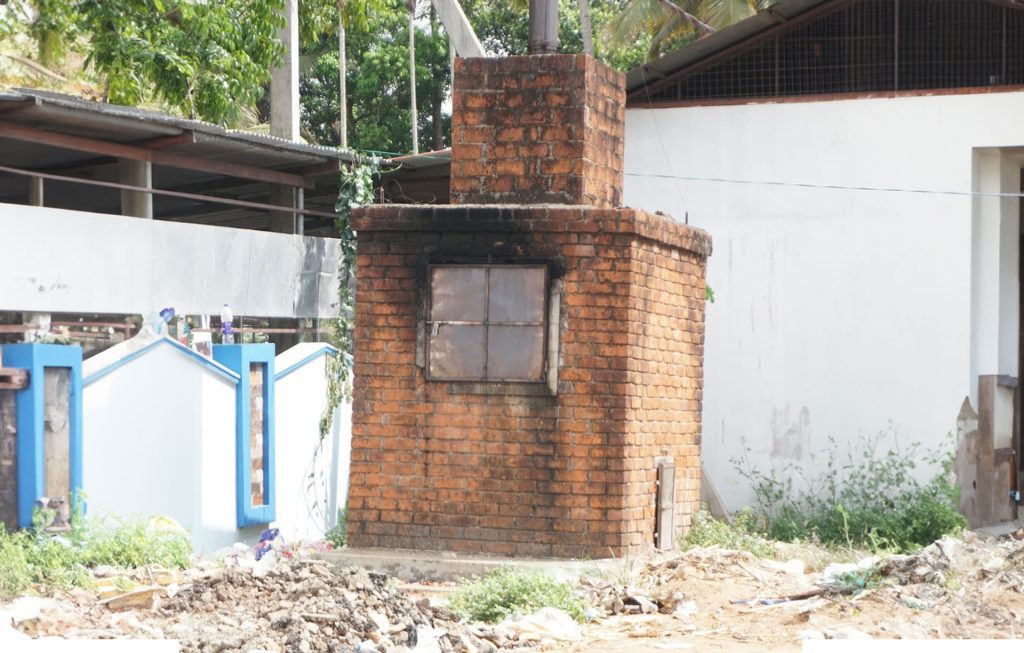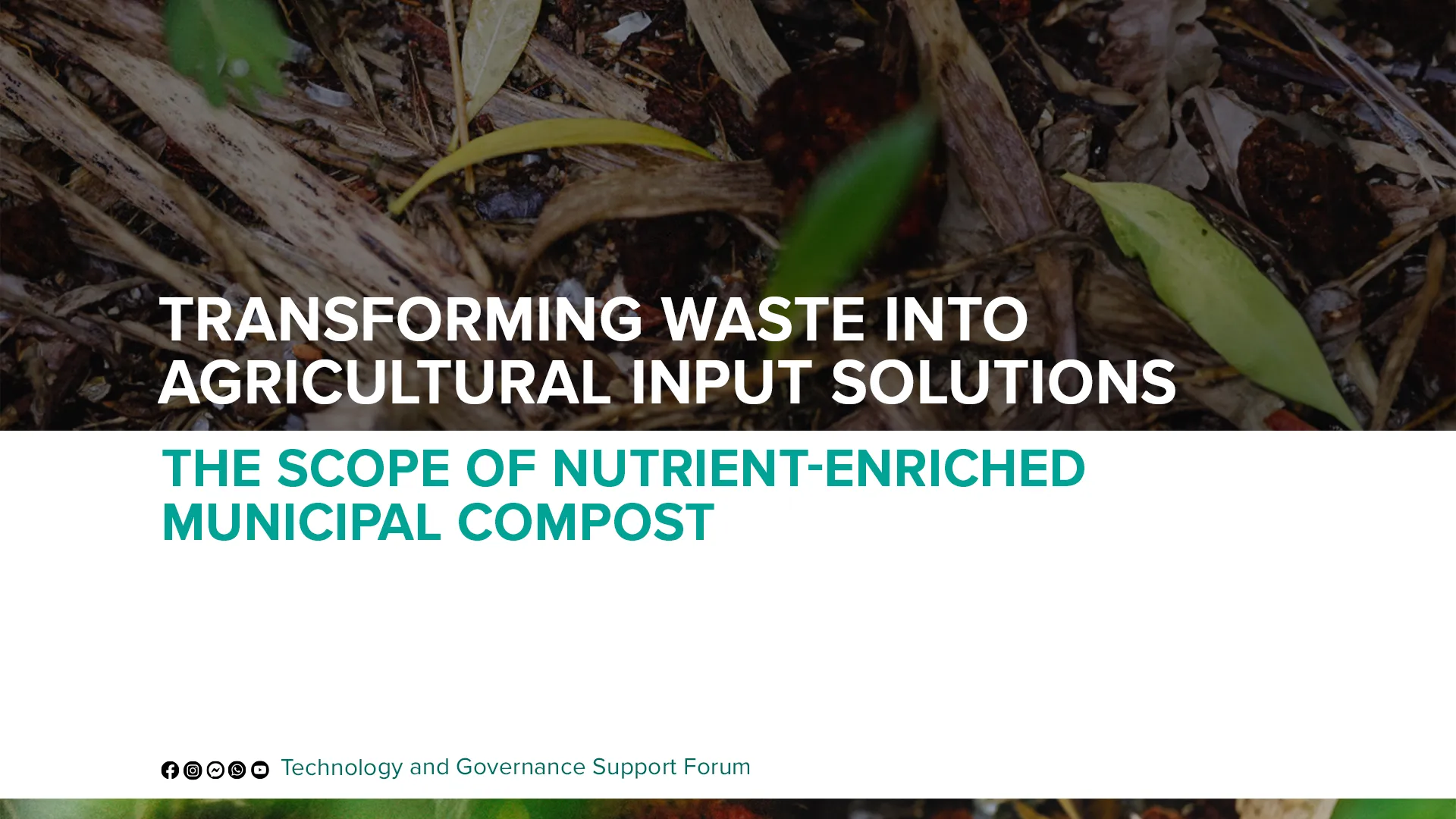Edathua Perunnal: A Pilgrimage Towards Sustainability

In the heart of bustling festivities and reverberating hymns, religious events blend cultural richness with profound spiritual fervor. Yet, amidst this vibrancy lies a challenge: managing vast quantities of waste. Picture the scene—a kaleidoscope of colors, a sea of faces, and remnants of celebration scattered: plastic bottles, food wrappers, and traces of sacred rituals. Pilgrims’ littering within the premises exacerbates this environmental burden.
The unpredictability of attendance numbers complicates this orchestration. From meticulously planned ceremonies to spontaneous moments, each gesture contributes to a mosaic of waste that demands careful handling. Traditional methods often strain under such volumes, raising environmental concerns.
However, within this challenge lies opportunity. At the crossroads of tradition and innovation, there is a call for sustainable solutions that align with our spiritual devotion. Implementing comprehensive waste management strategies, alongside awareness campaigns and community engagement in clean-up efforts, is crucial. By integrating sustainability into event planning and execution, we can preserve the sanctity of these gatherings while minimizing their environmental impact.
Imagine a future where efficient resource allocation, biodegradable alternatives replace harmful plastics, and attendees practice responsible waste disposal. Proactive planning and innovative solutions can transform these events into spiritually enriching experiences that promote environmental sustainability.
Edathua Pernnal: An introduction
Nestled amidst the lush greenery of Kerala, India, lies the St. George Forane Church in Edathua. Every year, this sacred space transforms into a vibrant tapestry of faith and culture during the Edathua Perunnal, a festival dedicated to Mar Gewargis Sahada. For 18 days, pilgrims flock from far and wide, their devotion painting the air with energy and enthusiasm. However, amidst the joyous chants and fervent prayers lies a hidden challenge – the vast amount of waste generated during the festivities, accumulating in a small area over a short period of time.
The celebrations kick off with the flag hoisting ceremony on April 27th each year. The number of visitors to the Edathua Church during the feast days can vary between 2 million to 5 million people. These include parishioners, locals, and pilgrims from neighboring states, with attendance fluctuating each year. The Perunnal lasts until May 14th, featuring a variety of rituals and events that contribute to waste generation. These include the circumambulation procession, tonsure ceremony, and other religious activities.
The waste comes from multiple sources: lodging facilities for migrant pilgrims, church premises, commuting areas, almsgiving spaces, and commercial zones with temporary shops. This diverse and extensive waste stream highlights the need for effective waste management strategies to preserve the sanctity and beauty of the event and its surroundings.

Quantity of Waste Accumulated
Over 39,200 kg of waste accumulated during the Edathua Perunnal, painting a daunting picture of the festival’s environmental impact. This staggering amount encompasses a diverse array of materials, each contributing to the overall waste stream. Here’s a closer look at the breakdown:
Food Waste
Amidst the celebrations, we see piles of discarded food scraps and kitchen waste, forming the most significant portion of the festival’s refuse. An estimated 29,400 kg of waste, including slaughter remnants, fish waste, and food leftovers, is generated during these days. It’s a staggering sight that underscores the need for better meal planning and waste reduction strategies.
As we walk around, we notice pilgrims cleaning and preparing food in various areas around the church. Feathers and slaughter waste are carelessly dumped at certain points, a vivid reminder of the lack of awareness about proper waste disposal. Instead of the serene, spiritual sanctuary we expected, we found pockets of the church grounds scattered with discarded feathers and food waste, detracting from the sacred atmosphere and posing serious health and environmental risks.
Plastic Waste
Discarded plastic bottles, bags, wrappers, and other disposable plastic items are a major concern, accounting for an estimated 20% (approximately 7,840 kg) of the total waste. The prevalence of single-use plastics highlights the urgent need for biodegradable alternatives and stricter waste management practices. As we walk through the grounds, we find ice cream covers, disposable plates, plastic bags, and other items littering the area.
It’s disheartening to see that people are not separating plastic waste from biodegradable waste. After the feast, ice cream wrappers and other plastic debris are scattered across the church grounds, marring the beauty of the sacred space. The site underscores the necessity for better waste segregation practices and awareness among attendees to ensure that the Edathua Perunnal remains both spiritually enriching and environmentally responsible.
Sanitary Waste
Used sanitary napkins, diapers, and other personal hygiene products contribute approximately 5% (around 1,960 kg) to the waste stream. Managing this type of waste requires special attention due to its potential health hazards. As we explore the festival grounds, we notice these items discarded near the toilet blocks and bathing areas. This highlights the importance of dedicated disposal facilities and effective waste management practices during the Edathua Perunnal to maintain cleanliness and hygiene.
Waste Water
While the church premises have a sewage treatment facility, sullage — wastewater from kitchens, baths, and washing areas — is currently discharged untreated into nearby water bodies. During the Edathua Perunnal days, the food distribution area for volunteers generates approximately 12,000 liters of wastewater. This volume does not include sullage from pilgrim lodging facilities and other pilgrim-occupied spaces. Such practices pose a significant risk to local water quality and ecosystems, emphasizing the critical need for improved wastewater management strategies during the festival.
Other Waste:
This category includes items like leftover offerings, discarded flowers, broken pieces of utensils, and miscellaneous waste, forming a smaller yet notable portion of the overall waste. Each of these items, though seemingly insignificant individually, collectively contributes to the festival’s environmental footprint.


The unsorted and frequently improperly disposed waste places a heavy burden on the surrounding environment. Landfills strain under mounting pressure, and unsustainable incineration methods release harmful pollutants into the air. These outcomes jeopardize the integrity of the celebration itself, endangering both community health and the delicate ecological equilibrium of the region.
Raising awareness among the public about the necessity of segregating and properly disposing of waste is crucial. Waste segregation should begin at its source, ensuring responsible handling throughout the festival and beyond.

Grip of the Present: Current Waste Management Practices
While the dedication of the Perunnal Volunteers for waste management is undeniable, the current waste management system struggles to keep pace with the growing volumes of waste. Here’s a glimpse into the existing practices:
Limited Segregation
Waste is often collected in a commingled manner, with no distinction between food scraps, plastic, sanitary waste, and other materials. This haphazard approach makes recycling and responsible disposal significantly more challenging.
Strained Dumpsite/ Landfills
The primary mode of waste disposal relies on dumpsite/ landfills. A designated plot of land caters to the Perunnal’s waste, but its capacity is nearing exhaustion. This necessitates the search for additional landfill sites, raising concerns about long-term sustainability.
Imperfect Incineration
Two incinerators are present within the church compound to handle specific waste streams, primarily sanitary waste and paper. However, incineration is not an ideal solution. It releases harmful pollutants into the air and generates residual ash that requires further disposal.

These challenges underscore the pressing demand for a robust and sustainable waste management strategy at the Edathua Perunnal.
A Call for Change: Embracing a Sustainable Future
The time for action is now. Recognizing the urgent need for a solution, the Edathua Perunnal is embarking on a transformative journey towards sustainable waste management. This journey is not merely about managing existing waste; it’s about fostering a culture of environmental responsibility that resonates with the essence of the festival itself. Following our initial studies, our organization proposed several immediate recommendations to enhance waste management during the Edathua Perunnal in 2024.
The Roadmap to a Greener Perunnal: A Multi-Pronged Approach
The path to a cleaner Perunnal is paved with a multi-pronged approach, addressing the issue at its source and throughout its lifecycle. Here’s a glimpse into the key initiatives that we have put forward:
Strategic Bin Placement
A network of clearly labeled bins for food scraps, recyclables (plastic and paper), and sanitary waste will be strategically placed throughout the venue. This will guide pilgrims towards responsible disposal and simplify the waste collection process.
Waste Segregation Education
Informative signs, pamphlets, and even public announcements will educate pilgrims on the importance of waste segregation. Understanding the different waste categories empowers individuals to make responsible choices, contributing directly to a cleaner environment.
Volunteer Network
A dedicated team of volunteers will be at the forefront of waste collection efforts. Their enthusiasm and commitment will ensure efficient waste management throughout the festivities.
Sustainable Choices at the Source
Encouraging the use of eco-friendly materials for offerings and discouraging single-use plastics will significantly reduce waste generation at its source. Pilgrims can be further incentivized through awareness campaigns that highlight the environmental impact of their choices.
Involvement of Haritha Karma Sena
The help of Haritha Karma Sena Members were utilized for the collections, segregation and resource recovery of plastic waste.
With the plan in place, we ensured that collected waste underwent thorough sorting and categorization to facilitate effective recycling practices and minimize environmental impact. We estimated waste quantities by meticulously documenting daily collections of food and sanitary waste, employing an average bag weight of 17.5 kg multiplied by the number of bags collected each day. This method accounted for potential mix-ups in waste types, ensuring precise measurement and effective management throughout the festival’s duration. Daily documentation meticulously tracked quantities of food and sanitary waste collected, enabling accurate measurement despite potential material commingling. Food waste, constituting 75% of the total, was managed separately, while onsite incineration handled sanitary and paper waste. The remaining 20% was responsibly directed to designated landfill areas.
2024 Observations: Insights on Waste Management
Despite the careful placement of bins, a considerable amount of mixed waste was discovered in some containers, as pilgrims often disposed of their waste without proper sorting. Through the dedicated efforts of Haritha Karma Sena, plastic waste was successfully sorted and recycled. Yet, it was evident that achieving consistent segregation across all waste types remained a notable challenge, despite the availability of designated bins.
Having adequate waste management infrastructure at religious institutions hosting large events is essential. It helps manage the substantial waste generated efficiently, promotes cleanliness, prevents environmental harm from improper disposal, and encourages sustainable practices among attendees. This infrastructure ensures the events can be enjoyed responsibly while preserving the environment for future generations.
A Celebration of Faith and a Testament to Responsibility
The Edathua Perunnal is more than a religious celebration; it’s a cultural phenomenon that transcends generations. By embracing sustainable practices, the organizers are setting a powerful example. They are demonstrating that faith and environmental responsibility can co-exist, even flourish together.
Imagine a Perunnal where the vibrant energy is matched by a clean and healthy environment. Imagine pilgrims returning home not just with spiritual rejuvenation but also with a renewed sense of environmental consciousness. This is the vision that drives the Edathua Perunnal towards a sustainable future. It’s a vision where faith and responsibility walk hand-in-hand, creating a legacy that honors tradition while protecting the environment for generations to come.
Let the Edathua Perunnal become a beacon of hope, not just for the faithful but for all those striving for a world in harmony with nature. Let this be a pilgrimage not just towards a holy shrine, but also towards a sustainable future.
Author








